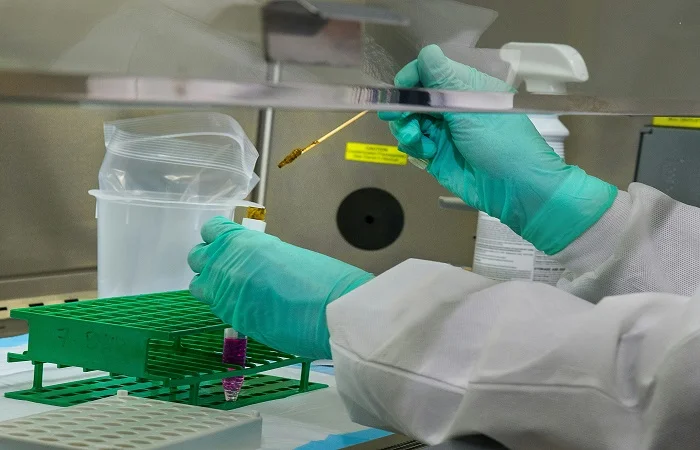Imagine a world where diseases like cancer, Alzheimer’s, and Parkinson’s could be diagnosed and treated at the molecular level, long before symptoms even appear. This is the promise of fluorescent biopolymers, a revolutionary new class of materials that could transform the field of biomedical research.
What Are Fluorescent Biopolymers?
At their core, biopolymers are simply long chains of naturally-occurring biomolecules like proteins, peptides, and nucleic acids. Think of them as the body’s own building blocks. Fluorescent biopolymers are a special type of biopolymer that have been engineered to absorb light and emit it at a different wavelength, effectively glowing in the dark.
Visualizing Biology in Real-Time
This fluorescence makes fluorescent biopolymers incredibly powerful tools for biomedical researchers. By designing these biopolymers to target specific cells or biomarkers in the body, scientists can use them to visualize and track biological processes in real-time, deep within living tissues.
A New Era of Precision Medicine
Imagine injecting a fluorescent biopolymer into a cancer patient that is programmed to bind only to cancer cells. Under near-infrared light, those cells would light up like beacons, allowing doctors to see the exact location and extent of the tumor. This could enable surgeons to remove the cancer with unprecedented precision, reducing the risk of leaving behind malignant cells that could seed new tumors.
Illuminating the Path to Understanding Disease
But the potential of fluorescent biopolymers goes far beyond just cancer. Researchers are exploring how to use these glowing biopolymers to study the progression of neurodegenerative diseases like Alzheimer’s and Parkinson’s at the molecular level. By creating biopolymers that bind to the toxic protein aggregates thought to cause these diseases, scientists hope to understand how and why these diseases develop, and potentially even halt their progression in its tracks.
Smart Biomaterials for Regenerative Medicine
Fluorescent biopolymers could also revolutionize the field of regenerative medicine. By designing biopolymers that provide a scaffold for cells to grow on, and that glow to indicate the health and function of the growing tissue, researchers could create a new generation of smart biomaterials that accelerate healing and tissue repair.
Overcoming the Challenges
Despite their immense promise, there are still challenges to overcome before fluorescent biopolymers can become a reality in the clinic. One major hurdle is ensuring these biopolymers are safe and don’t trigger an immune response when injected into the body. Researchers are working to use the body’s own biomolecules to create these biopolymers, reducing the risk of toxicity or rejection.
Homing in on the Target
Another challenge is getting the biopolymers to accumulate in the right place in the body, and stay there long enough to be useful. Scientists are exploring how to engineer the biopolymers with molecules that help them evade the body’s natural filters, like the kidneys and liver, and home in on their target like a missile.
A Bright Future for Biomedical Research
While there is still much work to be done, the field of fluorescent biopolymers is exploding with excitement and possibility. With their ability to light up biological processes in real-time, these glowing biopolymers could usher in a new era of precision medicine, where diseases are diagnosed and treated at the molecular level, long before symptoms even appear.
As researchers push the boundaries of what is possible with these incredible materials, one thing is clear: the future of biomedical research has never been brighter.
About the Author
Collected by Matexcel, a biotechnology company that provides a wide range of fluorescent biopolymers with nearly a hundred different types and labeling options to meet diverse research needs. Featured products include: FITC-labelled Hyaluronic Acid, >1000 KDa, TRITC-labelled Hyaluronic Acid, >1000 Kda, FITC-labeled Trehalose, FITC-labeled Polysucrose, FITC-labeled Lysine-dextran, FITC-labeled Inulin, FITC-labeled Hydroxyethyl Starch…


